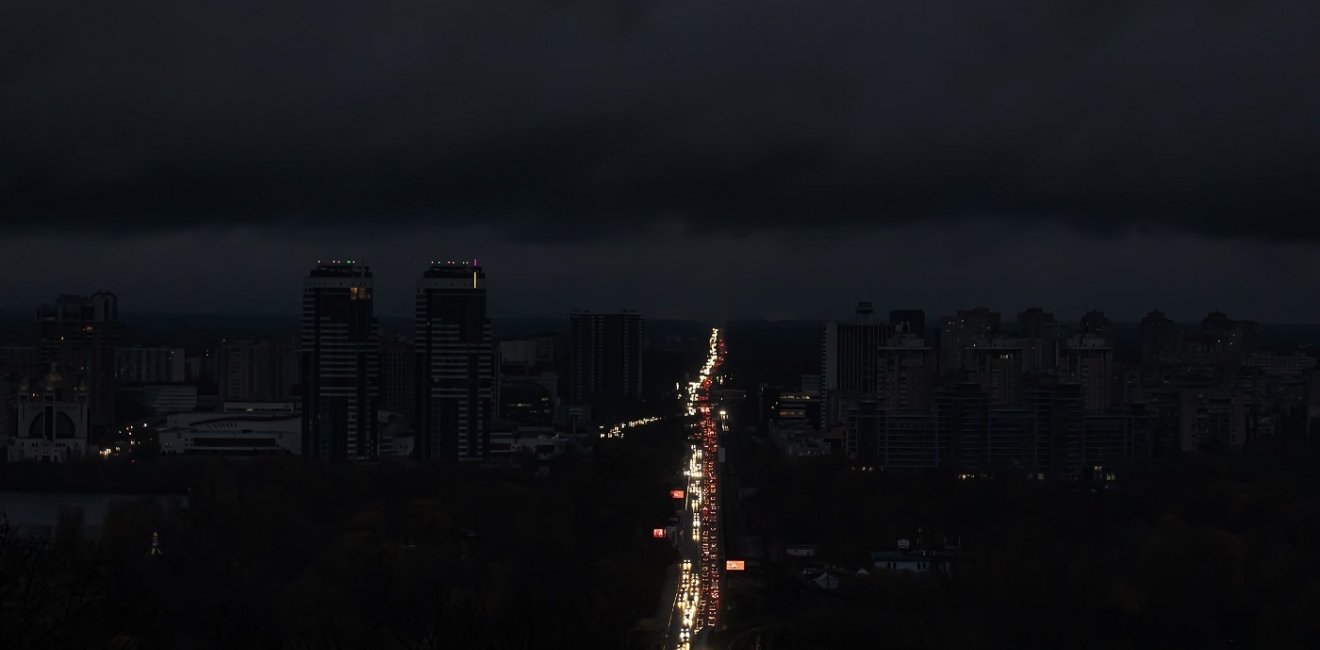
A blog of the Kennan Institute
The war Russia unleashed against Ukraine ten years ago, in 2014, has changed the country. The energy sector was not spared. It has especially suffered after the launch of the wide-scale invasion in February 2022. The war has also thoroughly altered Ukraine’s energy relations with Russia, which Ukraine was deeply dependent on economically.
During this same period, Ukraine has resolutely adopted norms and legislation to achieve deeper integration with the European Energy Community while achieving energy independence from Russia. Despite the war-related devastation of both the infrastructure and the economic profile of the energy sector, Ukraine has laid down a good track record in reforms, as evaluated by European observers.
The Energy Sector before the War
Before the invasion of 2014, during Viktor Yanukovych’s presidency, his cabinet pretended to carry out reforms oriented toward European integration. In 2011, Ukraine became a member of the European Energy Community. The country was required to implement energy regulations consistent with European ones. But real progress was very slight, and only weakly supported.
Implementing the requisite reforms robustly would have meant some painful changes, notably the imposition of market prices for households. Victor Yanukovych’s administration was more inclined to pay lip service to reforms as a means of building the president’s image rather than actually undertaking fundamental changes. But real reforms would also have threatened the power of the oligarchs and those in Yanukovych's closest circle, including his son, who tried to take control of the energy sector.
The Early Days of War
The war that began in 2014 has affected Ukrainian energy in two ways. First, some energy assets were lost in the occupied territories. The coal sector was particularly affected. Ukraine’s anthracite coal mines are located only in the Donbas, and at that time, coal was the only resource in which Ukraine was self-sufficient. After the occupation of the Donbas, Ukraine became import-dependent in energy, and as a result, began experiencing power cut-offs that same year.
The situation was worsened by Russia’s attempts at blackmailing Ukraine over gas supplies. Under the take-or-pay provision of the then existing contract, Ukraine would have had to pay huge amounts to Russia’s Naftogaz through 2019, whether or not any Russian gas was delivered. Moreover, Russia canceled the 30 percent discount stipulated in the Kharkiv Accords, agreed to in exchange for Kyiv allowing the basing of the Russian fleet in Crimea, and started demanding prices close to the highest in Europe. This two-pronged attack would have bankrupted Naftogaz. A few years later, Ukraine won the case before the Swedish International Court of Arbitration.
Second, the fear of an energy crisis in 2014 and some societal hesitancy about potential EU integration impeded reforms and led to the deferral of some needed changes in the energy sector. Nonetheless, during 2014–2017, crucial laws were adopted to bring Ukraine’s energy legislation in line with European rules, strengthen the country’s energy security, and make the energy sector more financially sustainable.
Meanwhile, Russia did not abandon its threats to Ukraine’s energy sector, merely moving on to different tactics. Russia-associated hackers attacked Ukrainian energy facilities a number of times. These attacks occasionally resulted in blackouts, as happened in late 2016.
The path of energy reforms from the early 2010s to February 2022 was not smooth, though important advances were made. So long as energy security was not uppermost on the risk agenda, different governments succumbed to the paternalistic—and historical—expectations of society, and extended price subsidies.
The crux of the matter, and the source of political anxiety and tweaking, was the price paid by households. Introducing unsubsidized prices for households was guaranteed to produce a political fallout, so that step was deferred, raised again, and deferred again. In fact, except for a short period, the country did not see a liberalized energy market with unsubsidized energy prices for households.
Run-up to Major War, and the War Itself
At the end of 2021 and the beginning of 2022, there was a general sense that a major conflict was imminent. Concerns at the time focused on the effects of shelling or missile strikes on nuclear or hydropower plants. However, the full-scale invasion rocked the Ukrainian energy sector on a scale never before experienced as Russia targeted the energy infrastructure with missiles, drones, explosives, and artillery. (We discussed how the Ukrainian energy sector fared during the first weeks of the invasion in an earlier Focus Ukraine blog piece).
Right away, Russian air strikes destroyed two dozen huge fuel depots together with refining capacities.
Before the invasion, Russia and Belarus together had provided more than half the fuels consumed in Ukraine. The country faced a fuel crisis as these supplies stopped and domestic refining capacities were destroyed.
The Ukrainian electricity industry suffered the most from war-related losses. The occupation of eastern territories since February 24, 2022, meant that Ukraine continued to lose access to energy capacities. Particularly devastating was the March 2022 loss of control of the Zaporizhzhia Nuclear Power Plant, the largest such plant in Europe, which before the all-out conflict had accounted for 44 percent of Ukraine’s nuclear capacities.
Russian troops seized the plant immediately after the invasion. The land around the plant was mined, the NPP became the grounds for an army base, and the repeated loss of the plant’s external power supply drastically increased the risk of a nuclear accident. Shelling the plant opened a veritable Pandora’s box of nuclear safety risks.
Today, 30 percent of Ukraine’s solar capacities and 90 percent of its wind power capacities remain in the occupied territories.
Continued Attacks Degrade the Energy Sector
In September 2022, Russia launched a massive airstrike campaign against Ukraine’s power infrastructure on an unprecedented scale, trying to destroy both power generation and transmission infrastructure. More than half the power transmission infrastructure was destroyed or critically damaged. Missile attacks decimated the entire 750 kV high-voltage network that was used to distribute electricity from nuclear power plants throughout Ukraine.
Almost all thermal and hydropower plants have come under attack. At the end of April 2023, available thermal power capacities were 65 percent less than the 17.1 GW available in early 2022, and available hydropower capacity had decreased by 29.8 percent from 6.7 GW in the same period.
In 2022, Russians mined the Kakhovka hydropower plant in the occupied Kherson region. Later, in June 2023, Russians blew up the Kakhovka Dam, posing serious threats to people, the environment, and the economy.
Positive Adjustments. Against all odds, Ukraine has made many positive changes to the energy sector and has hardened energy security. The war that was unleashed in 2014 and the full-scale invasion of 2022 both occasioned a decrease in dependency on Russia for energy supplies. Before 2014, Russia was the major supplier of different energy resources, and now supplies from Russia are banned. Despite the hostilities, Ukraine continues Russian oil and gas transit to Europe and is committed to doing so for as long as Europe needs these supplies.
Integration with European Markets
Though strongly tied to Russia in the past, Ukraine’s natural gas and electricity markets are now integrated into European markets. Already after the invasion, the Ukrainian power system, earlier connected to the Russian system, was synchronized with the European one. Ukraine has fulfilled all technical requirements and is now an essential part of the European power system.
Ukraine has been adopting and implementing European energy regulations and legislation for ten years. In a recent report, the European Commission assessed Ukraine's progress in implementing energy reforms as at “a good level of preparation.” For the period since the start of Russia’s full-scale invasion, Ukraine was evaluated as having made "some progress." The Energy Community Secretariat noted Ukraine’s impressive track record on electricity and gas market reforms in 2023.
With all the progress of the past ten years, Ukraine still has some obligations to fulfill. It still needs to carry out energy reforms to comply with the European rules and regulations. At the top of the list are achieving fully transparent energy markets, abandoning subsidies for households, and eliminating the state’s role in the energy sector.
The opinions expressed in this article are those solely of the author and do not reflect the views of the Kennan Institute.
Author

Director, Energy Program, Ukrainian Institute for the Future

Kennan Institute
The Kennan Institute is the premier US center for advanced research on Eurasia and the oldest and largest regional program at the Woodrow Wilson International Center for Scholars. The Kennan Institute is committed to improving American understanding of Russia, Ukraine, Central Asia, the South Caucasus, and the surrounding region through research and exchange. Read more

Explore More in Focus Ukraine
Browse Focus Ukraine
Talking to the Dead to Heal the Living

Ukrainian Issue in Polish Elections


